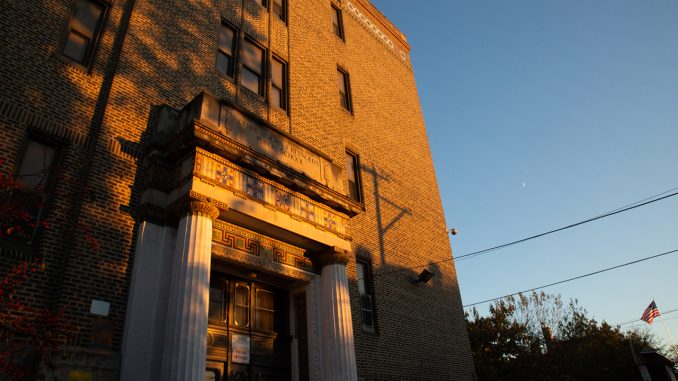
The former General John Reynolds Public School in Sharswood will be turned into more than 50 housing units for veterans experiencing homelessness.
The Philadelphia Redevelopment Authority will renovate the building on 24th Street near Jefferson to add 55 housing units as part of a $300,000 grant from the United States Environmental Protection Agency, said Ali Mooney, a redevelopment officer for PRA.
The funding comes from the EPA’s Brownfields and Land Revitalization Program, which provides funding to aid in assessing, cleaning and redeveloping properties contaminated by hazardous substances, according to the EPA’s website.
Residents can fill out an application to live at the site, which will be available when construction starts in February 2020, said Jamila Davis, PRA’s public information officer.
Between 2013-17, there were 60,000 veterans living in Philadelphia County, according to the American Community Survey by the U.S. Census Bureau.
The transition back to civilian life can pose challenges, like locating a new home, pursuing education or a new career path and reestablishing relationships within the community, according to New Directions for Veterans, a nonprofit providing social services to veterans in Los Angeles.
About 9 percent of all adults experiencing homelessness in the United States are veterans. On any given day, an estimated 40,056 veterans experience homelessness in America, according to the 2017 Annual Homeless Assessment Report.
Ten percent of the housing will be set aside for referrals from Philadelphia’s Office of Homeless Services. The housing will also be targeted at people who are 55 or older, a need that’s been identified in the surrounding neighborhood, Davis said.
“The important part is just really to house as many people as possible,” Mooney said.
Mina Holladay, co-president of Temple Veterans Association, said veterans can face a lot of difficulties during their transition back to civilian life.
“We go into this bubble, where we’re veterans and nobody knows what to do with a vet,” said Holladay, a third-year media and communications major and a United States Military veteran. “It’s not just awkward from our standpoint either though, it’s often awkward from a civilian standpoint where they don’t know what to say and how to treat vets.”
Holladay said the discharge process from the military consists of a week of classes from the Department of Defense on acclimating to civilian life, mental and physical evaluations, paperwork and a resume-building process.
“You’re doing it too late if you’re setting up a company that is waiting for vets to walk through the door and be ready to be helped,” Holiday said. “You’ll see us when we’re absolutely desperate, and we have nowhere else to go.”
Former Army Lt. Elizabeth Baik, a doctoral student at the Klein College of Media and Communication, has worked with veterans experiencing homelessness in Colorado.
“Veterans might feel isolated or lonely,” Baik said. “The important thing is just to find like-minded people that you can get support from.”
Holladay said it took her more than 20 years to feel like a civilian, and that she felt pressure to be a “strong pillar of hope for other people.”
“What happens in the military is that you are somewhat dehumanized,” said Jimmy White, a former Temple student and a veteran of the Iraq War. “Empowerment will show [veterans] that they have worth and they have value. Empowerment is giving them a voice, humanizing them and then giving them the opportunities to succeed by using their strengths.”
This new housing development will provide services within the residence through public health management corporations that are available to the veterans living there.
“By virtue of these persons living in this building they are already accessed,” Davis said. “They are going to have the opportunity to talk to whoever they need to talk to, to get the help and access that they need, versus, someone who would have to seek it out.”



Awesome story of hope with so many sources. Very informative.